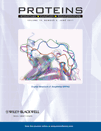Progress in the structural prediction of G protein-coupled receptors: D3 receptor in complex with eticlopride
Abstract
Predicting the three-dimensional structure of ligand–receptor complexes involving G protein-coupled receptors (GPCRs) is still a challenging task in rational drug design. To evaluate the reliability of the GPCR structural prediction, only a couple of community-wide assessments have been carried out. Our participation in the last edition, DOCK2010, involved the blind prediction of the dopaminergic D3 receptor in complex with the D2/D3 selective antagonist eticlopride for which the crystal structure has been recently released. Here, we describe a methodology that succeeded to produce a correctly predicted eticlopride-D3 receptor complex out of three submitted models. Ranking the obtained models in the correct order is the main challenge due to subtle structural differences in the complex that are not sufficiently captured by conventional scoring functions. Importantly, our work reveals that a correct ranking is obtained by including a more sophisticated description of conformational ligand energy on binding. All in all, this case study highlights the current progress in modeling GPCR complexes and underlines that in silico modeling can be a valuable complement in GPCR drug discovery. Proteins 2011; © 2011 Wiley-Liss, Inc.




